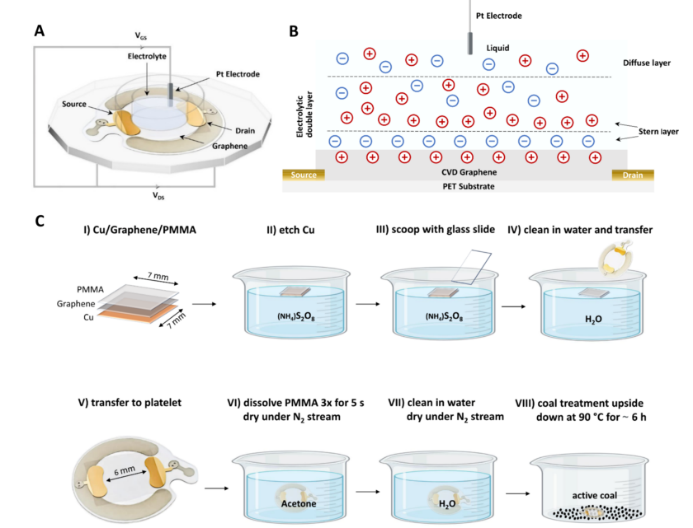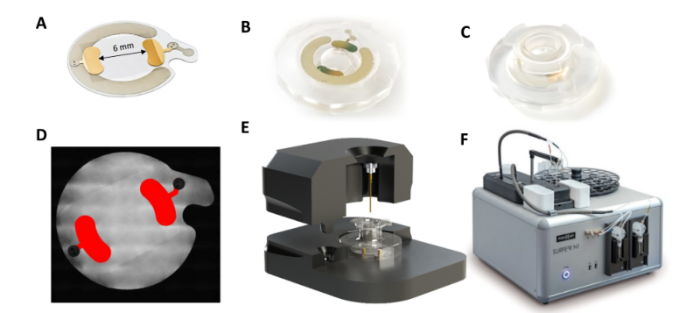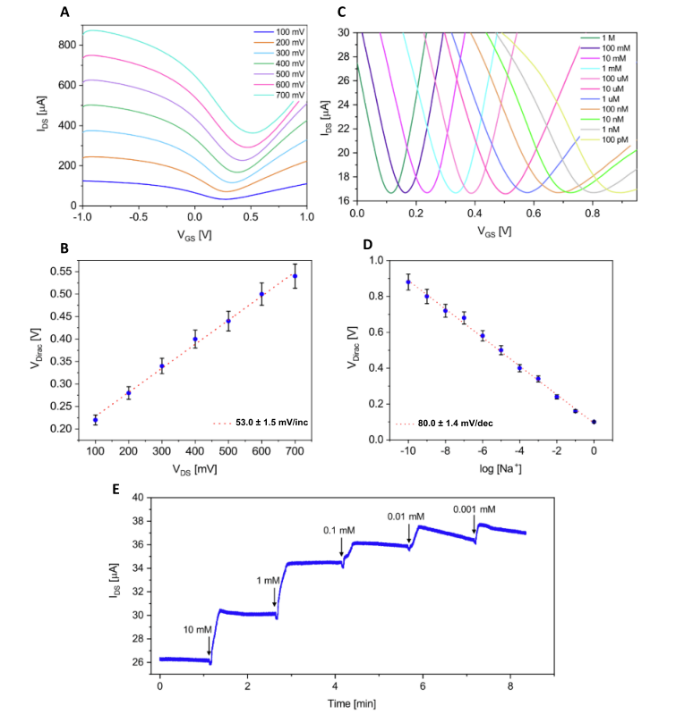Highly Sensitive Large-Area Graphene Biosensors Integrated into Automated Sensing Platforms
Reference:
Meincke M, Bazzone A, Holzhauser S, et al. Integration of Highly Sensitive Large-Area Graphene-Based Biosensors in an Automated Sensing Platform. Measurement, 2025, 240: 115592.
Read the full paper here
Research Background
Graphene, a one-atom-thick carbon layer, is extremely sensitive to environmental changes, including biological molecule interactions and charge transfer. This sensitivity arises from its excellent surface-to-volume ratio and tunable electronic mobility, which respond to the adsorption of charged particles. Traditional fabrication methods for micron-scale graphene sensors are costly and challenging to implement in industrial environments, limiting their widespread adoption. However, producing graphene through chemical vapor deposition (CVD) on copper foil, then transferring it to a clean substrate, has significantly advanced the development of graphene-based transistors and sensors. This innovation has paved the way for producing highly sensitive biosensors with lower detection limits, even for trace analytes in complex samples. Despite these advances, graphene’s ultra-high conductivity and low resistivity still offer substantial potential for enhancing automatic liquid-handling platforms tailored for electrophysiological experiments.
Research Focus
This study aims to bridge the gap by integrating large-area graphene sensors into existing solid support film technologies. The integration of graphene significantly enhances the platform’s ability to perform ion-sensitive measurements at high throughput, enabling the rapid detection of multiple analytes. This is critical for advancing sensor technology in fields where reliability and stability are paramount, such as biotechnology, healthcare, environmental monitoring, and food safety. The team successfully developed graphene-based biosensors using CVD-grown graphene through a wet chemical transfer process, exploring their responses to various analytes and conditions, including changes in ion concentration, ionic strength, and protein and ssDNA adsorption.
The sensors were constructed with three metal electrodes in a solution-gated field-effect transistor (SGFET) configuration. By replacing the traditional gate electrode with a reference electrode, the threshold voltage responds to the interface potential between the electrolyte and semiconductor. Any change in this interface potential leads to a significant change in the semiconductor conductivity. The first layer of the electric double layer (EDL) consists of ions with charges opposite to those in the graphene electrode, while the second layer consists of positive and negative ions. These ions gradually reach the potential of the solution away from the electrode.
Key Findings
- Enhanced Sensitivity: The graphene-based biosensors demonstrate excellent sensitivity and can detect analytes in the range from picomolar to molar concentrations, such as sodium chloride and potassium chloride. The sensor’s sensitivity is 80 mV/dec for sodium chloride and 90 mV/dec for potassium chloride.
- Low Detection Limits: The sensors achieve a detection limit (LOD) in the range of 10-10 M, significantly improving the sensitivity compared to previous studies.
- Stability and Flexibility: The sensors maintain stability under challenging conditions, such as varying pH levels and rapid solution exchanges, showing excellent resilience for real-time monitoring.
- High Throughput and Cost-Effectiveness: By integrating PET substrates with CVD-grown graphene, the platform is not only cost-effective but also scalable for large-scale applications, making it viable for commercial use.
Manufacturing Process and Sensor Assembly
The graphene sheets were transferred to PET substrates using a wet chemical transfer protocol, and the electrodes were connected to the graphene. The assembly process, which includes cleaning and annealing steps, ensures the uniformity of the devices. The sensors were then integrated into a semi-automated liquid-handling platform, capable of performing real-time measurements of ion concentrations and biological interactions.



Conclusion and Future Outlook
The integration of graphene-based sensors into an automated platform improves sensor performance, enabling more accurate detection of subtle electrical signal fluctuations. The research demonstrates the tremendous potential of graphene in enhancing biosensor sensitivity, stability, and cost-effectiveness. Additionally, the ability to directly culture cells on the graphene surface or measure cell membrane fragments while maintaining their physiological integrity offers new opportunities for biological research and diagnostics.
This work paves the way for future developments where graphene-based sensors can be used for cell analysis, biological monitoring, and the detection of biomolecules in their natural states. The ability to integrate graphene into large-area sensor platforms opens up a wide range of applications in medical diagnostics, environmental monitoring, and food safety.

